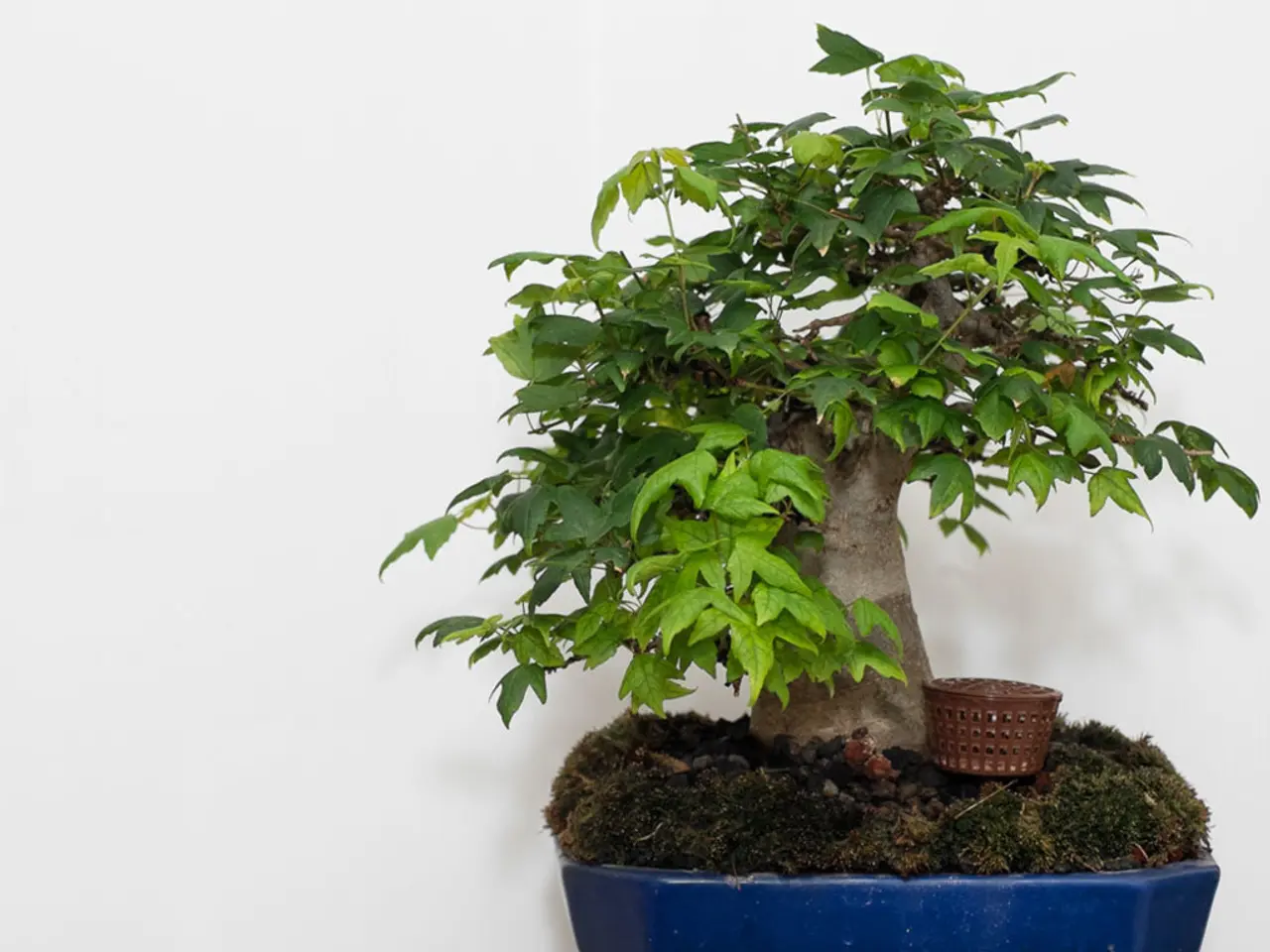Bonsai Development: Exploring Plant Responses to Growing Conditions
Bonsai trees, renowned for their intricate shapes and vibrant beauty, are not just works of art but living organisms with a remarkable ability to adapt and thrive. A recent study delves into the fascinating world of bonsai tree physiology, revealing how these miniature trees respond hormonally to pruning, wiring, and repotting.
Pruning: Encouraging Branching and Healthier Growth
Pruning, a fundamental part of bonsai care, triggers a cascade of hormonal changes that promote healthier, balanced growth. By reducing auxin levels at the apical bud, pruning releases the suppression of lateral buds, allowing cytokinins to stimulate dormant buds near the cut site to grow. This results in increased branching and denser foliage, shaping the tree while promoting healthier growth.
However, excessive or poorly timed pruning can deplete energy reserves, weakening the tree. It's essential to prune during the dormant phase to minimise stress and promote resilience.
Wiring: Strengthening Tissues and Enhancing Resilience
Wiring induces mechanical stress on the tree's branches and trunk, leading to localised hormonal changes. These changes, particularly the production of ethylene and stress hormones like jasmonates, modulate growth by strengthening tissues and sometimes altering auxin transport to reinforce the wired branch position. While specific detailed hormonal studies on bonsai wiring are limited, mechanical stimuli in plants generally promote hormone-mediated cell wall remodeling and adaptation to stress, improving structural resilience.
Repotting: Balancing Root and Shoot Growth
Repotting, which includes root pruning and soil replacement, can stress the bonsai. This stress temporarily alters hormone levels such as abscisic acid (ABA) related to stress responses, and auxin levels in roots and shoots due to root system disturbance. Root pruning reduces auxin production below ground, potentially limiting apical auxin transport temporarily, which can slow shoot growth but stimulate root regeneration. Proper timing and post-repot care are critical to allow the tree to re-establish nutrient and hormonal balance, promoting resilience and long-term healthy growth.
In summary, these interventions manipulate the tree’s hormonal balance to shift auxin and cytokinin dynamics, induce stress-hormone-mediated tissue strengthening and remodeling, and trigger stress hormone responses and root-shoot hormonal signaling disruptions that necessitate recovery but ultimately promote root and shoot balance.
Caring for Bonsai Trees: A Journey of Adaptation
Understanding these hormonal responses allows bonsai cultivators to time interventions to the tree’s growth cycle and minimise excessive stress, fostering resilience and promoting vibrant, awe-inspiring bonsai trees. Regular monitoring of soil moisture and nutrient levels can help mitigate stress in bonsai trees.
Additionally, many bonsai species can adapt to indoor environments with limited natural light exposure, requiring careful consideration of supplemental lighting, temperature, and humidity control. Ideal fertilization frequency for bonsai trees depends on factors like species, age, and growth rate, with sparing use during the growing season recommended.
Pests and diseases affect bonsai trees differently than regular trees due to their miniaturised size, altered growth patterns, and confined environments. Incorporating stress-reducing techniques, such as misting and humidity control, can create a more stable environment for bonsai trees to thrive. Techniques that minimise shock and promote root development, such as gradual pruning and gentle repotting, also foster bonsai health.
Bonsai adaptation is a tribute to the remarkable resilience of these miniature trees, with their physiological responses a masterclass in adaptability. Bonsai trees can be propagated through cuttings, offering a precise replica of the parent tree's desired traits. It is the duty of cultivators to refine their techniques to coax forth these living works of art, evermore vibrant, resilient, and awe-inspiring.
Science reveals that pruning, wiring, and repotting of bonsai trees trigger hormonal changes that guide their growth and adaptation (science). These treatments optimize the tree's health-and-wellness, with pruning promoting balanced growth, wiring reinforcing structural resilience, and repotting balancing root and shoot growth (therapies-and-treatments).




